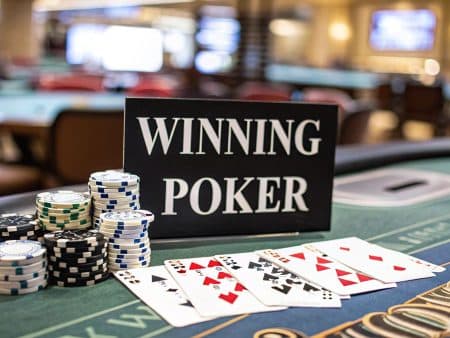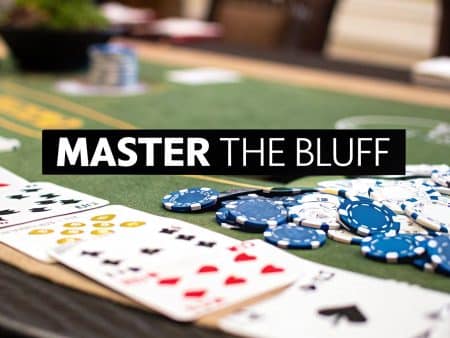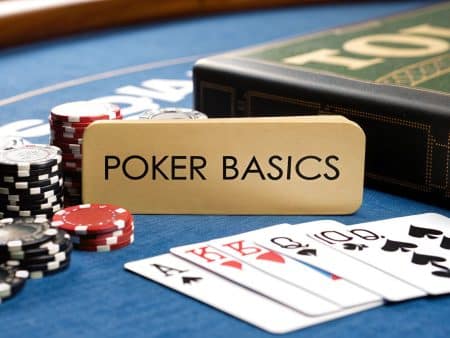If you want to build a solid Texas Hold'em strategy from the ground up, you need to master one core concept: playing a select few starting hands, and playing them aggressively. This style is known as "tight-aggressive," and it’s the bedrock of winning poker. It’s all about minimizing your losses with weak hands while maximizing your wins with strong ones.
Forget about chasing every pot. Real success comes from discipline, not just luck.
Building Your Foundation in Poker Strategy

It’s easy for new players to get caught up in the Hollywood version of poker—dramatic bluffs, gut feelings, and all-in shoves. While those moments are exciting, they aren't what builds a bankroll. Consistent winning is a much quieter, more methodical process.
Think of it like building a house. You can't put up the walls and roof without first pouring a solid concrete foundation. In poker, that foundation is a disciplined strategy that guides every single decision you make at the table. For anyone starting out, the most proven approach is the tight-aggressive (TAG) style. It boils down to two simple but incredibly powerful ideas.
Understanding the Tight-Aggressive Style
First, let's talk about the "tight" part. This just means you're being extremely selective about which starting hands you choose to play. Instead of limping into a pot with just any two cards, you’re going to fold the vast majority of them. You're waiting patiently for hands that have real potential. This simple act of folding weak hands immediately plugs a massive leak that sinks most beginners.
Next comes the "aggressive" part. When you do decide to play a hand, you enter the pot with force. That means betting and raising, not just passively calling. This approach puts immense pressure on your opponents, gives you control of the hand, and helps you build a bigger pot for when you have the advantage.
This one-two punch—playing very few hands, but playing them like you mean it—is the absolute core of a winning Texas Hold'em strategy. It protects your chip stack from bad spots and puts you in the driver's seat to win big.
A huge piece of this puzzle is knowing which hands are worth playing in the first place. You should be focusing on hands with a statistically high chance of winning, like big pairs (Aces, Kings, Queens) or high-value suited cards (like Ace-King of hearts). Once you get one of these premium hands, you play it hard.
Mastering the TAG style takes patience and a whole lot of discipline, but it’s the most reliable path to becoming a profitable player. Before you ever think about fancy bluffs or complex reads, you need to nail these fundamentals.
For a deeper dive, check out our complete poker strategy for beginners guide.
Why Your Seat at the Table Matters
In Texas Hold'em, your two hole cards are just the starting point. Your position at the table—where you sit relative to the dealer button—is your single greatest weapon. Honestly, it's more important than the cards you're dealt a lot of the time. Acting last gives you an informational edge that separates the fish from the sharks.
Think of it like being a general on a battlefield. If you have the high ground, you get to see what all your opponents do before you commit your own troops. That’s exactly what late position is in poker. By the time the action gets to you, you’ve seen who checked, who bet, and who raised. This intel is pure gold, allowing you to make smarter, more profitable decisions.
On the flip side, playing from early position is like walking into that same battlefield blindfolded. You have to act with zero information about what anyone else is going to do. This forces your hand, literally. You have to play a much tighter, more conservative game, sticking only to premium cards. This isn't just a suggestion; it’s a cornerstone of any solid Texas Hold'em strategy.
The Power of Position Explained
Your seat at the table directly dictates which hands you can even consider playing. From an early seat, you should be folding almost everything except for the monster hands—big pairs and big-ace combos. As you get closer to the button (middle and late position), you can start to open up your range and get more creative with speculative hands like suited connectors or small pairs.
This all comes down to a simple principle: the later you act, the more control you have. You can dictate the size of the pot, find better spots to bluff, and generally make life miserable for the players who had to act before you. For a refresher on how the action flows around the table, check out these fundamental poker rules for beginners.
Acting last is the most significant non-card advantage in poker. It allows you to control pot size, bluff more effectively, and realize your equity more often because you have the final say in the betting round.
Don't just take my word for it. Look at the data. This chart shows just how much a player's win rate skyrockets based on where they're sitting.

The numbers don't lie. Players consistently win more money from late position. It's not a coincidence; it's a fundamental truth of the game.
Breaking Down the Positions
To really put this into practice, it helps to mentally divide the table into three zones. Figuring out which zone you're in is the first step toward making the right pre-flop decision.
To keep things simple, here’s a quick guide on how to approach each position as a beginner playing a tight, aggressive game.
| Position | Playable Hand Examples | Strategic Approach |
|---|---|---|
| Early Position | AA, KK, QQ, JJ, AKs, AQs | Play Only the Strongest Hands. You have the least information, so you must be extremely selective. Avoid speculative hands. |
| Middle Position | TT-88, AJs-ATs, KQs, QJs | Slightly Loosen Up. You can add in more strong Broadway cards and medium pairs, but still play with caution. |
| Late Position | Any Pair, Suited Connectors (87s), Suited Gappers (T8s) | Open Up Your Range. With the advantage of information, you can profitably play a much wider variety of hands. |
This chart is just a starting point, of course. But internalizing this framework—tight in early position, loose in late position—is the key to building a winning strategy.
Your Position, Your Strategy
Let's get more specific. At a typical 9-handed table, the positions break down like this:
-
Early Position (EP): We're talking about the first few seats to the left of the blinds, often called "Under the Gun" (UTG). You're in the dark here, so you have to play like it. Stick to the absolute top-tier hands.
-
Middle Position (MP): A few players have acted, but several more are waiting behind you. You can start to open up your range a bit more than you would in EP, but you still need to be cautious. Danger lurks around every corner.
-
Late Position (LP): This is where the magic happens. The Cutoff (to the right of the button) and the Button are the prime real estate at the table. The Button is the single best seat in poker because you are guaranteed to act last after the flop, turn, and river. From here, you have maximum information and can play a huge variety of hands, both for value and as bluffs.
Choosing the Right Starting Hands to Play

In any given hand of poker, your most important decision is made before you ever see a single community card. It’s that simple choice: play the two cards you were dealt, or toss them in the muck. This pre-flop decision is the absolute foundation of any solid Texas Holdem basic strategy, and getting it right will save you a mountain of chips over the long run.
New players almost always play way too many hands. It's a classic mistake. They get caught up in the action, hoping to catch lightning in a bottle on the flop. That's a surefire way to bleed your stack dry. The truth is, a disciplined player knows that the vast majority of starting hands—well over 70% of them—are just unprofitable garbage. Your first job is to become a good folder, filtering out the junk and only putting your money in the middle when you have a hand with real potential.
Think of it this way: you wouldn't bring a butter knife to a sword fight. So why would you try to win a huge pot with a hand like 7-2 offsuit? The goal is to choose the right weapon for the specific situation you're in.
Tiering Your Starting Hands
Of course, not all playable hands are created equal. It helps to mentally sort hands into different tiers of strength. This isn't about memorizing a rigid chart, but about building a flexible framework for deciding which hands to play and, just as importantly, how to play them.
-
Premium Hands (Tier 1): These are the absolute monsters—the top of the poker food chain. We're talking about AA, KK, QQ, JJ, and AKs (Ace-King suited). With these hands, your goal is simple: build a big pot. You should be raising almost every single time. The odds of being dealt pocket Aces are a staggering 221-to-1, so when you finally get them, you have to make it count.
-
Very Strong Hands (Tier 2): Just a step below the monsters, you'll find hands like TT, 99, AQs, AJs, and KQs. These are powerful holdings that can rake in some serious pots, but they demand a bit more awareness than the premium group. You should still be coming in for a raise from most positions, but you also need to be willing to tap the brakes if you run into heavy-hitting resistance post-flop.
-
Speculative Hands (Tier 3): This category includes hands that don't have much immediate strength but have massive potential to hit a huge flop. We're talking about medium-to-small pocket pairs (88-22), suited connectors (98s, 87s), and suited aces (A9s-A2s). These hands are hoping to flop a monster like a straight, a flush, or a set (three of a kind).
The key takeaway is that a hand's value is never fixed. It's fluid. A hand like 8-7 suited might be an instant fold from an early position, but it can become a powerful, deceptive weapon when you're in a late position and have more information on your opponents.
Adapting Your Range to the Game
Your hand selection can't exist in a bubble. It has to change based on your position at the table and what the players in front of you have done. King-Jack offsuit might be an easy muck from under the gun, but it can be a standard open-raise from the button if everyone else has folded.
This is where the tight-aggressive strategy really begins. By being disciplined and folding your weak hands before the flop, you completely avoid those tricky, expensive decisions later in the hand. When you finally do decide to play, you’ll enter the pot with a stronger range of hands than your opponents, giving you a quiet but powerful mathematical edge that pays off in the long term. This is the discipline that separates winners from everyone else.
Using Simple Math to Make Smart Decisions
https://www.youtube.com/embed/B1JjmsekmqI
The word "math" makes a lot of poker players sweat, but you don't need a Ph.D. to make smart, profitable decisions at the table. Honestly, winning poker boils down to asking yourself one question again and again: Is the potential reward worth the risk?
The tool we use to answer that question is called pot odds. Think of it as a quick cost-benefit analysis for every bet you face. It’s how you compare the money you could win with the money it costs to stay in the hand. This simple calculation turns a blind gamble into a calculated risk, especially when you're chasing a hand like a flush or a straight.
Ignoring this basic math is like driving with your eyes closed—you're just guessing and hoping for the best. Making it a core part of your Texas Hold'em strategy is what separates the pros from the pigeons.
Calculating Pot Odds in a Real Hand
Let's walk through a classic situation you'll face all the time.
The pot has $80 in it by the time you get to the turn. Your opponent makes a small bet of $20. The pot is now $100 (the original $80 plus their $20), and it costs you $20 to call and see the final card on the river.
To figure out your pot odds, you just compare the total pot to what you have to risk. The pot is offering you $100, and your investment is $20.
This gives you pot odds of 5-to-1 (you get this by dividing $100 by $20). Simple, right? Now you have a concrete number. The next step is to figure out if your chances of actually winning the hand are better than 5-to-1.
Connecting Pot Odds to Your Winning Chances
Let's stick with that same hand. Imagine you're holding a flush draw—you have four hearts and need just one more on the river to make your hand. We need to know the odds of that happening.
A full deck has 13 hearts. You can see four of them (two in your hand and two on the board). That means there are 9 hearts left that can save you. We call these your "outs." With 46 cards still unseen, what are the chances one of those 9 hearts will appear?
A handy shortcut here is the "Rule of Four and Two." It's a great way to estimate your chances without a calculator.
- On the flop: Multiply your outs by four. (9 outs x 4 = 36% chance to hit by the river)
- On the turn: Multiply your outs by two. (9 outs x 2 = 18% chance to hit on the river)
Since we're on the turn in our example, you have roughly an 18% chance to hit your flush. In betting terms, that translates to odds of about 4.5-to-1 against you.
The Golden Rule of Pot Odds: If the odds the pot is giving you are better than your odds of hitting the hand, it's a profitable call.
In our example, the pot is offering you 5-to-1 odds on your money. Your chances of winning are roughly 4.5-to-1. Since 5 is bigger than 4.5, this is a clear, mathematically profitable call.
Sure, you'll still miss your flush sometimes. That's poker. But if you make this same call every single time you're in this spot, you are guaranteed to make money in the long run. That's how you build a bankroll.
To really get these numbers down pat, our guide on essential poker math calculations is the perfect next step. It breaks everything down even further and will make this a natural part of your Texas Hold'em game.
How to Bet for Maximum Value and Pressure

In Texas Hold'em, betting is how you communicate. Every chip you push forward tells a story, and the size of your bet is the most important part of that narrative. The moment you stop asking, "Should I bet?" and start asking, "How much should I bet?" is when you truly start leveling up as a player.
The amount you slide into the pot is what shapes the hand. It directly manipulates your opponents' choices, inflates the pot, and ultimately drives your profits over the long run. You're not just throwing chips in the middle; every bet needs to have a clear, calculated purpose. We'll break down the two main reasons you should be betting and how to size those bets correctly.
Betting for Value
A value bet is simple: you're pretty sure you have the best hand, and you want to get paid for it. The real art here is figuring out the perfect amount to bet—large enough to get the most money possible, but not so big that you spook weaker hands into folding.
As a general rule, a solid value bet on the flop or turn is somewhere between 50% and 75% of the pot. A bet in this range puts your opponent in a bind with their marginal hands and draws, forcing them to make a tough (and hopefully, for you, wrong) decision.
A well-sized value bet extracts the most chips from opponents holding second-best hands. Your goal is to find the absolute maximum they are willing to pay to see your cards.
Let's say you're holding a monster hand, but the board is looking dicey with lots of flush or straight possibilities. This is when you should lean toward a larger bet. By betting big, you protect your hand by making it mathematically wrong for your opponents to chase their draws. You’re essentially charging them a premium price to see the next card.
Betting to Apply Pressure
The other core reason to bet is to force a better hand to fold. This is the heart and soul of a good bluff. Your bet size has to be believable. A tiny, timid bet just screams weakness and practically invites a call. On the flip side, a ridiculously large bet might be risking far too much for the potential reward.
Once again, a bet around two-thirds of the pot is a great starting point for a bluff. It’s a respectable amount that makes your opponent stop and think. Suddenly, they start second-guessing if their top pair is really strong enough to call. A good pressure bet plants that seed of doubt.
This same logic applies to what's known as a semi-bluff. This is when you bet with a drawing hand, like a flush or straight draw. It's a powerful play because it gives you two different ways to win the pot:
- Path 1: Your opponent folds right then and there.
- Path 2: They call, but you hit your draw on the turn or river and win anyway.
Getting your bluffs through comes down to understanding your opponent and telling a convincing story with your bets. If you want to dive deeper, our guide on how to bluff in poker is packed with tips to make your plays more effective. Just remember, proper bet sizing is the engine that drives a successful bluff.
Putting It All Together: A Cohesive Texas Hold'em Strategy
Winning at poker isn't about mastering a bunch of disconnected tricks. It's about weaving everything together into a seamless, logical process. Your position at the table should inform the hands you play. Pot odds then tell you when it's right to call. Your bet sizing tells a story to your opponents. The real goal is to get so comfortable with these concepts that they become second nature—a disciplined, consistent approach you can rely on.
Let's walk through an example.
Imagine you're dealt Ace-King suited in middle position. That's a premium hand, so you open with a standard raise. Only the player on the button calls you. The flop comes down King-high, with two rainbow rags. Perfect. You've hit top pair with the best possible kicker, putting you in a great spot to get some value. A bet of about two-thirds of the pot feels right here—it gets value from weaker King-X hands and puts pressure on any drawing hands.
Your opponent makes the call. The turn is a total brick, changing nothing. Time to continue the story you started on the flop. You fire another bet to signal strength, and once again, they just call. Now the river card peels off, and it completes a potential flush draw. What's the play?
This is where your thought process has to adapt. Just blindly firing a third barrel is risky. If they were chasing that flush, you're about to pay them off big time. A much smarter, more calculated play is to check. This controls the size of the pot and might even induce a bluff if your opponent missed their draw.
A truly effective strategy is a fluid conversation between your hand, your position, and your opponent's actions. Every decision builds on the last, creating a logical narrative from pre-flop to river.
This kind of multi-layered thinking is the heart of modern poker. The game has evolved far beyond gut feelings and simple reads; it's become much more mathematical. In fact, players who use data-driven strategies can drastically cut their expected losses compared to those who just wing it.
Nailing these fundamentals is the single most important step in your poker journey. When you start weaving these individual skills together, you stop just playing your cards and start executing a cohesive game plan. To see more of these concepts in action, check out our ultimate guide to Texas Hold'em rules and strategies, which is packed with more practical examples.
Of course. Here is the rewritten section with a more natural, human-written tone.
Your Poker Strategy Questions, Answered
Even with the best guides, you're going to have questions pop up at the table. It’s part of the learning process. Here are a couple of common stumbling blocks I see new players run into all the time.
When Should I Actually Bluff?
Honestly, as you're starting out, you should barely bluff at all. At least, not in the classic, "I have nothing but I'm betting big" sense.
Your focus should be on the semi-bluff. This is where you bet with a hand that isn't strong yet but has a great chance to become a monster—think flush draws or open-ended straight draws. This strategy is powerful because it gives you two ways to win: everyone folds to your bet right now, or you hit your card on the next street and take down an even bigger pot.
Pure bluffs (betting with complete air) should be saved for very specific spots where you have a rock-solid read on your opponent and you're almost certain they'll fold.
Expert Tip: If there's one thing to burn into your brain, it's this: position is king. Acting last is the biggest legal advantage in poker. You get to see what everyone else does before you have to make a decision, and that information is pure gold.
How Do I Adjust to Different Kinds of Players?
A winning strategy is never one-size-fits-all; you have to adapt to the game you're in.
If you find yourself at a table full of maniacs—players who are constantly betting and raising—your best move is to tighten up. Be patient. Let them do all the wild betting while you wait for a premium hand. Then, you can pounce and let their aggression build a huge pot for you.
On the flip side, if the table is super passive and everyone is just limping and calling, forget about bluffing. It won't work. Instead, your game plan shifts to pure value. When you hit a strong hand, your foot should be on the gas. Bet, bet, and bet again to get as many chips as possible from all the weak hands that love to call.
Article created using Outrank











